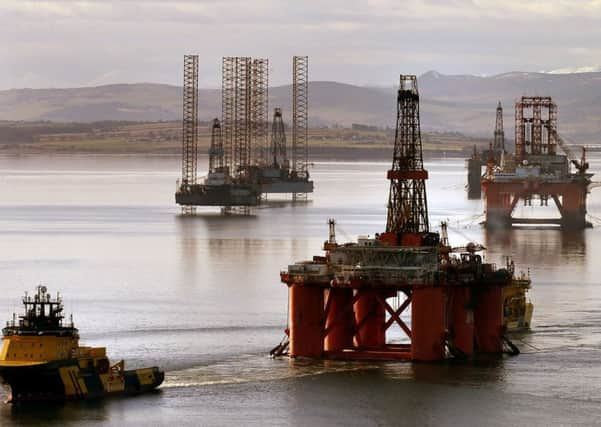Carbon capture and storage potential remains appealing
This article contains affiliate links. We may earn a small commission on items purchased through this article, but that does not affect our editorial judgement.


Instead of emissions from facilities such as power stations being pumped into the atmosphere, they could be taken offshore and injected into the voids left when oil and gas is extracted from fields.
A number of CCS plants have successfully been established in North America in recent years, but despite successive attempts the technology has so far failed to get off the ground in the UK on a large scale.
Advertisement
Hide AdAdvertisement
Hide AdThe ending of the UK government’s CCS commercialisation competition as part of the 2015 spending review was seen as a major blow for the development of the sector.
At the time, two projects – Peterhead in Aberdeenshire and White Rose in North Yorkshire – were competing under the competition, which offered a £1 billion grant for further developing the technology.
The Peterhead project was being backed by Perth-based utility SSE and oil giant Shell, who argued that it had potential to bring huge value to the UK, both in immediate emissions reductions and developing knowledge for the benefit of a wider industry.
While that project came to an abrupt end, a report last week looked to support a renewed push by scientists and industry to get CCS back on the agenda.
The Energy Technologies Institute (ETI) study aimed to take stock of how the land lies now two years on from the ending of the CCS commercialisation competition. It found that the UK has more than enough potential CO2 storage sites to meet its needs out to 2050 and that a substantial number of these sites have already been fully or partially appraised.
It also concluded large scale storage sites using shared infrastructure and existing low risk technologies would provide the lowest cost route to developing carbon capture and storage (CCS) in the UK.
Based on the work done to date, the ETI believes there is now “no significant technical barrier that would limit the CCS industry developing at scale in the UK from a number of strategic shoreline hubs”.
Advertisement
Hide AdAdvertisement
Hide AdThe report suggests that work could begin now to match CO2 emitters, such as industry, to suitable storage sites in order to “start small and build fast”, with the first full-chain projects ultimately leading to a network of shared infrastructure.
The ETI report highlights the east coast as a prime location for CCS deployment as it has a large emissions base, there are good sites for large new low carbon power stations and industry, and it is close to large, low cost offshore storage sites.
But Scottish Carbon Capture & Storage (SCCS), a research partnership between British Geological Survey, Heriot-Watt University, University of Aberdeen, the University of Edinburgh and the University of Strathclyde, also points out a project in line with the “start small and build fast” idea is already under way in North-east Scotland.
The Acorn CCS project, being developed by a consortium led by Aberdeen-based consultancy Pale Blue Dot, and including SCCS as a partner, has recently secured funding for feasibility studies. The small-scale, low-cost project will use existing infrastructure to tie a large base of CO2 emitting sites into extensive North Sea storage. That storage could also be used for CO2 emissions shipped from Teesside and other “clusters” around the North Sea basin.
SCCS argues that with the right level of support – “importantly, much less than the UK’s previous failed attempts at delivering large-scale CCS” – Acorn could be operating as early as 2020.
Professor Stuart Haszeldine, SCCS director, said: “Acorn aims to show how we can start small and build out to deliver a world-class CCS industry with an unparalleled geological storage asset and a skills base to match.”
Advertisement
Hide AdAdvertisement
Hide AdHe argues that there is even greater potential for the industry in the UK than the ETI report suggests, and believes the UK’s CO2 storage capacity could accept UK greenhouse gas emissions from industry, heat and power well beyond 2050 to 2100, or even 2200.
“This can create jobs and protect UK businesses against inevitable rises in carbon prices from our trading partners in Europe, the USA and China,” he argues.
The UK has some of the world’s best geological CO2 storage, up to 2.5km below the North Sea, which can be utilised in carbon capture and storage (CCS) projects to help the UK meet legally binding carbon targets.
However, the potential to use those sites depends to a large extent on the preservation of oil and gas infrastructure at risk of being decommissioned. “We hope the ETI’s findings will further strengthen the case for protecting these offshore assets and making swift progress on CCS – a technology that will deliver net zero carbon emissions not just for electricity but also industry, heat and transport by 2050,” adds Haszeldine.